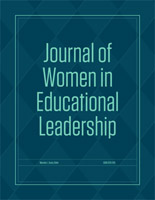Department of Educational Administration
Date of this Version
1-26-2021
Document Type
Article
Citation
Journal of Women in Educational Leadership, 2021
doi: 10.32873/unl.dc.jwel.198
Abstract
The present studies compare, between Historically Black Colleges and Universities (HBCUs; n=102) and a non-HBCU cohort matched for location, religious and vocational mission, and student enrollment (comparator CUs; n=102), the programmatic foci of women in institutional leadership positions. They demonstrate that, at HBCUs, women are more prevalent in leadership roles with male-dominated foci (e.g., finance), and less prevalent in roles with female-dominated foci (e.g., public relations) than at comparator CUs (p < 0.01). A survey of academic leaders (n=1,053 invited; 111 viewed survey; 83 completed survey) at these institutions indicates that women leaders at HBCUs more frequently fill institutional programmatic gaps than their counterparts at comparator CUs (p < 0.001) or men in any academic setting (p < 0.005). Reasons may include the social purpose of HBCUs; the stereotype threat of the traditional “service” role of women and the unique intersectionality encountered by Black women faculty; and the importance of race over gender in homosociability at HBCUs. This suggests that emphasis on the socioeconomic mission and philosophy of higher education may enhance faculty recruitment diversification efforts in higher education. It also raises the question of whether seeing women in atypical leadership roles influences the career aspirations and attitudes towards women leaders of the students, both men and women, at HBCUs.

